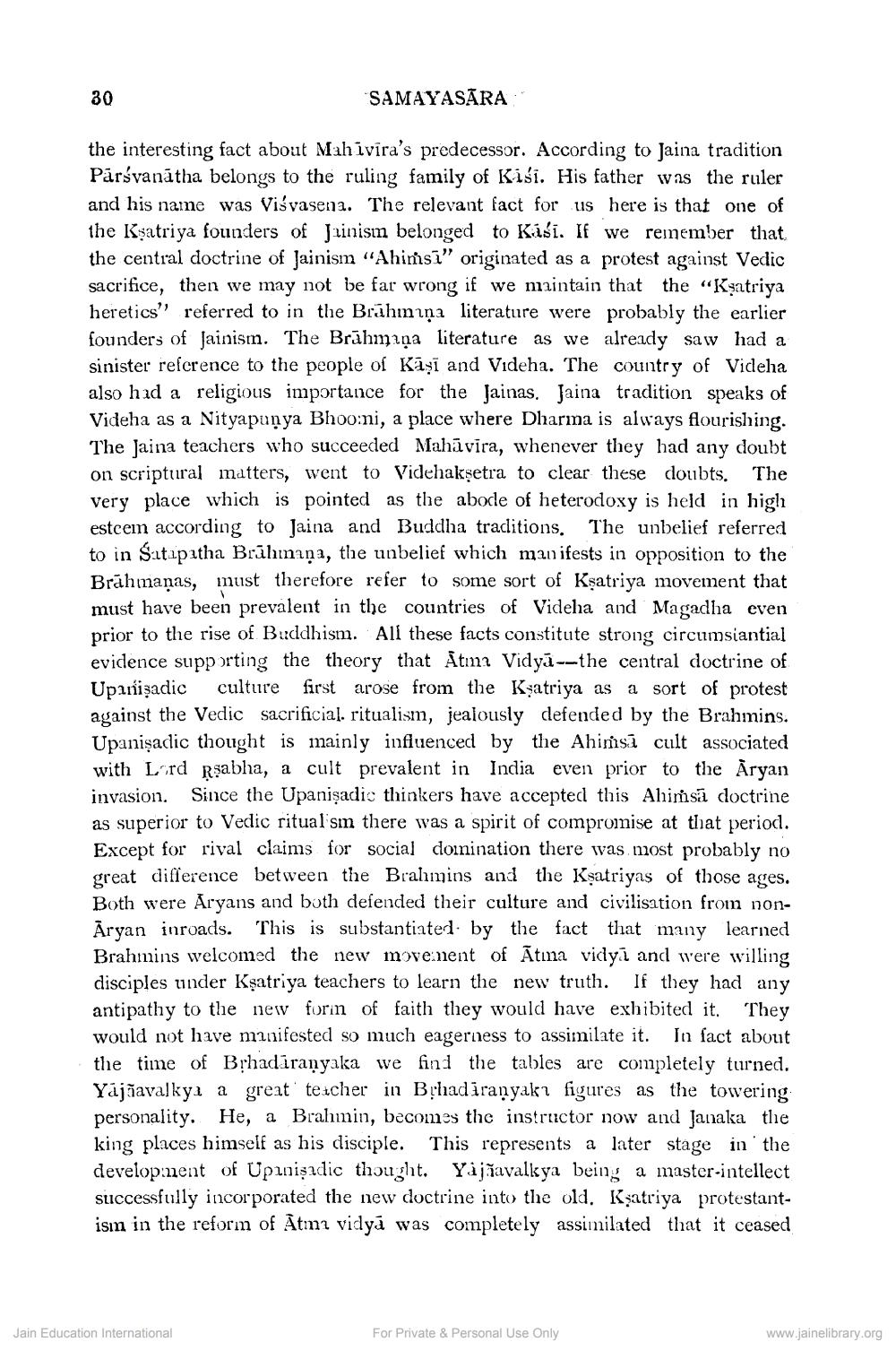________________
30
SAMAYASARA
the interesting fact about Mahīvīra's predecessor. According to Jaina tradition Pārsvanātha belongs to the ruling family of Kisi. His father was the ruler and his name was Visvasena. The relevant fact for us here is that one of the Ksatriya founders of Jainism belonged to Kisi. If we reinember that the central doctrine of Jainism "Ahinsī" originated as a protest against Vedic sacrifice, then we may not be far wrong if we maintain that the "Ksatriya heretics' referred to in the Brahmıņa literature were probably the earlier founders of Jainism. The Brāhmıņa literature as we already saw had a sinister reference to the people of Kāşi and Videha. The country of Videha also had a religious importance for the Jainas. Jaina tradition speaks of Videha as a Nityapunya Bhoo:ni, a place where Dharma is always flourishing. The Jaina teachers who succeeded Mahāvira, whenever they had any doubt on scriptural matters, went to Videhakşetra to clear these doubts. The Very place which is pointed as the abode of heterodoxy is held in high estcem according to Jaina and Buddha traditions. The unbelief referred to in Satıpıtha Brūlnıņa, the unbelief which mu ifests in opposition to the Brāhmanas, must therefore refer to some sort of Ksatriya movement that must have been prevalent in the countries of Videha and Magadha even prior to the rise of Buddhism. All these facts constitute strong circumsiantial evidence supporting the theory that Atma Vidyā--the central doctrine of Upanişadic culture first arose from the Ksatriya as a sort of protest against the Vedic sacrificial. ritualism, jealously defended by the Brahmins. Upanişadic thought is mainly influenced by the Ahinsa cult associated with Lard Rsabha, a cult prevalent in India even prior to the Aryan invasion. Since the Upanişadic thinkers have accepted this Ahinsa doctrine as superior to Vedic ritual'sm there was a spirit of compromise at that period. Except for rival claims for social doinination there was most probably no great difference between the Brahmins and the Ksatriyas of those ages. Both were Aryans and both defended their culture and civilisation from nonAryan inroads. This is substantiated by the fact that many learned Brahmins welcomed the new movement of Atina vidyż and were willing disciples under Kşatriya teachers to learn the new truth. If they had any antipathy to the new forin of faith they would have exhibited it. They would not have manifested so much eagerness to assimilate it. In fact about the time of Brhadiranyaka we find the tables are completely turned. Yajšavalkya great teucher in Byhadiranyakı figures as the towering personality. He, a Brahmin, becomes the instructor now and Janaka the king places himself as his disciple. This represents a later stage in the development of Upinişadic thought. Yajžavalkya being a master-intellect successfully incorporated the new doctrine into the old, Ksatriya protestant isın in the reforın of Atmi vidyā was completely assimilated that it ceased
Jain Education International
For Private & Personal Use Only
www.jainelibrary.org




